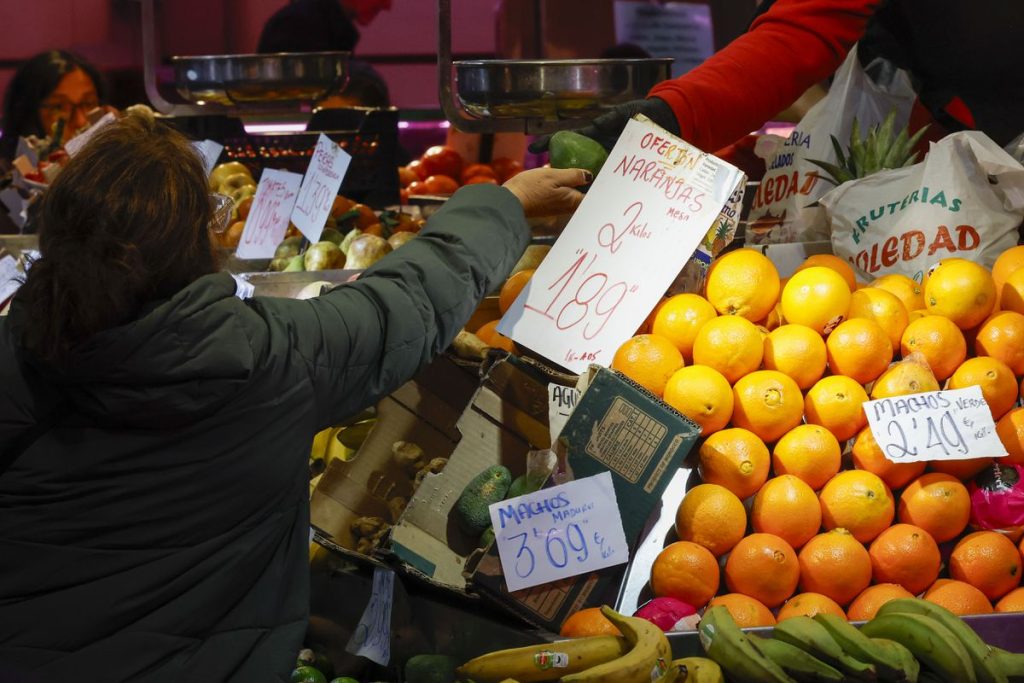In recent months, the idea that the worst is definitively behind us is gaining strength. The price of food registered its lowest rate in over two years in March, at 4.3%, according to the National Institute of Statistics (INE). This is a reduction of over 12 points compared to March 2023 when prices rose by 16.5%, causing difficulties for families at the supermarket. However, the fluctuation in the cost of fuels and electricity continues to push the Consumer Price Index (CPI) up, which increased to 3.2% in March. The underlying CPI, which excludes energy and fresh foods, increased from 3.4% to 3.3%, indicating a moderation in other groups that influence the indicator.
The significant decrease in the cost of the shopping basket is due to the lower prices of legumes and vegetables, which have fallen by 9.2% compared to a year ago. Overall, prices of the shopping basket have not dropped but are rising at a much slower rate. For example, the price of beef rose by 2.8% this time compared to over 13% a year ago. Pork prices increased by 6.4%, more than 13 points less than the previous period. On the other hand, olive oil has seen the largest increase in prices, at 70%, among all products in the price index, according to the statistics institute.
The main factor contributing to the general increase in inflation has been fuels, which have been steadily rising since the beginning of the year. Unlike natural gas and electricity costs, which have decreased to levels below the pre-2021 inflationary crisis levels, gasoline and diesel prices have increased in the past year. Specifically, gasoline prices increased by 3.7% and diesel by 2.8%, according to the INE. In late March, the average price of gasoline in Spain was 1.63 euros per liter, 0.5% higher than a year ago, as reported by the European Union’s Petrol Bulletin.
In contrast to the decreasing trend in gasoline prices, the price of electricity has increased due to the normalization of the VAT rate from 10% to 21%. Despite the fact that regulated market prices are at historic lows, electricity prices increased by 7.2% in March compared to the previous month. From an annual perspective, electricity prices increased by 6.9%. This increase was triggered by the government’s decision to raise the VAT rate, which was contingent on the wholesale market price staying above 45 euros per MWh. The modulation of these factors has exceeded analysts’ expectations, as they anticipated a smaller increase, especially considering the moderation in food prices.
Analysts are mainly concerned about the cost of services, such as bars and accommodations, which continue to exert pressure on underlying inflation. It is uncertain whether this increase is due to second-round effects or temporary adjustments made at the beginning of the year. Hotels, cafes, and restaurants have seen the highest increase in prices within the index over the past year, at 5.5%, just as the peak tourism season begins. Despite this risk, inflation is decreasing both nationally and across Europe, as evidenced by Germany’s inflation rate of 2.2% in March, the lowest since 2021. This has prompted the European Central Bank to consider lowering interest rates, with President Christine Lagarde committing to a first rate cut in June at the latest.















